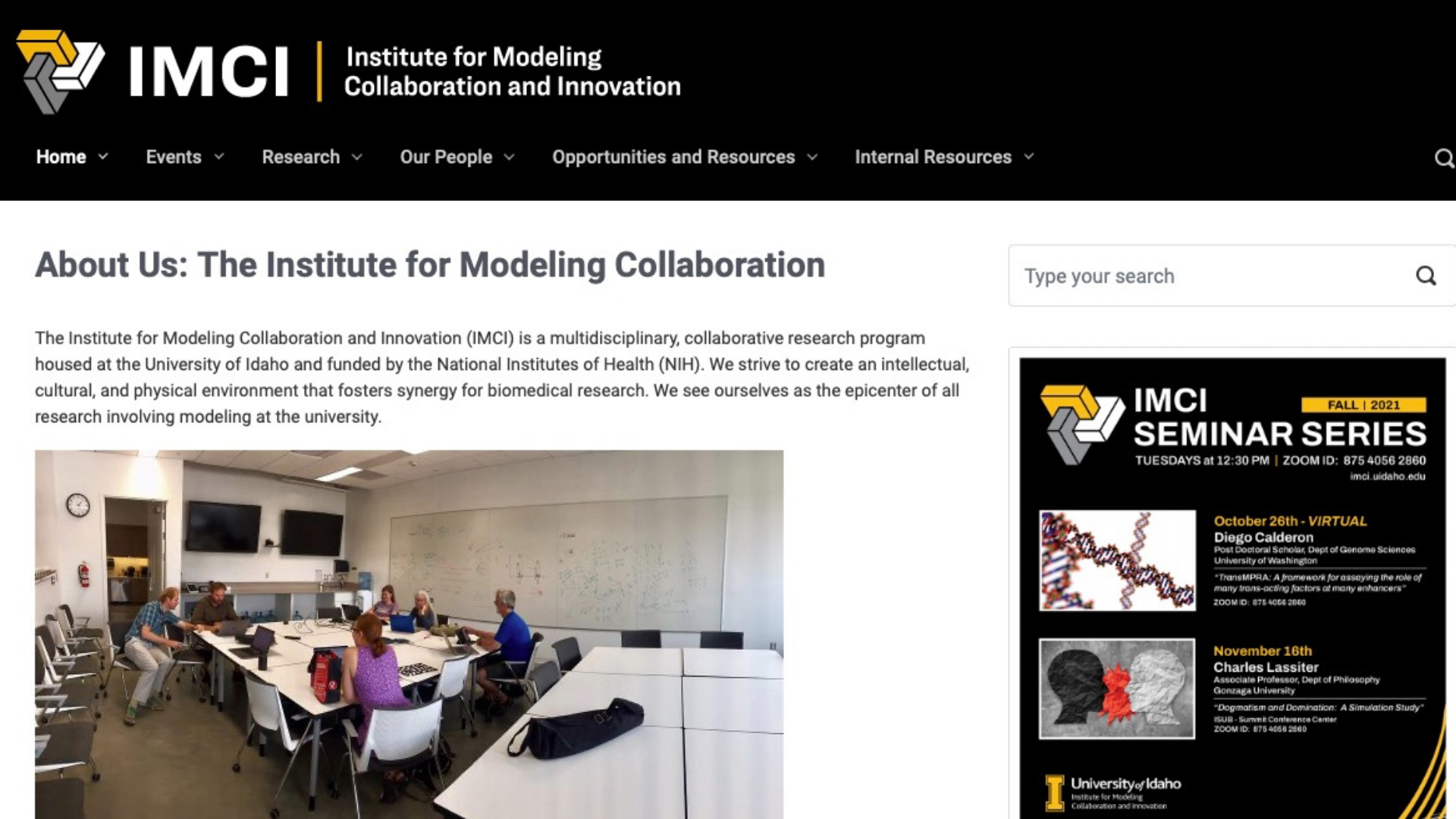Biomedical problems are innately complex, and their solutions require input from many fields. Many centers focus on a single disease or organ system. By contrast, the Center for Modeling Complex Interactions focuses on an approach that can address many biomedical problems: team-based, interdisciplinary research centered around modeling. Our goal is to support and facilitate biomedical discovery by integrating modeling into interdisciplinary research. Modeling improves research at all stages—hypothesis formulation, experimental design, analysis, and interpretation. It provides a unifying language by which exchange of ideas can highlight commonalities and uncover unforeseen connections between problems. Formalization of ideas into this unifying language also improves rigor and reproducibility. We define modeling broadly to include everything from deterministic and stochastic mathematical approaches, to physical and computational models of three- dimensional objects, to agent-based and machine learning approaches where exact solutions are not possible. We seek to support modelers by increasing their numbers, and by giving them opportunities to play on interdisciplinary teams. We seek to support empiricists by giving them access to relevant modeling expertise, and by creating a community and a culture to facilitate interdisciplinary research. In Phase I, the Center for Modeling Complex Interactions created the intellectual, cultural, and physical environment to promote team- based, interdisciplinary research. In Phase II, we will build on that foundation by maintaining a strong interdisciplinary culture to foster collaboration among people who might otherwise never connect, and by adding additional faculty to expand our modeling expertise. We have four Aims: 1) Support faculty to carry out model-based, interdisciplinary biomedical research and increase their competitiveness for external funding. Research in the Center is carried out in the context of Working Groups—zero-barrier, interdisciplinary, goal- focused teams that meet regularly to get work done. Supported research includes three Research Projects, Pilot Projects, Modeling Access Grants, and ad hoc teams. Our comprehensive plan for proposal preparation improves grantsmanship, and our staff assists with submission and grant management. 2) Increase University of Idaho’s faculty participation in biomedical research. We will add six new faculty as a commitment to this Phase II COBRE and attract broader participation from across the University. 3) Extend the reach of the Modeling Core into new areas of modeling to capitalize on emerging opportunities. The Modeling Core accelerates interdisciplinary research by placing Core Fellows at the hub of the research community. We have added new Core Initiatives in machine learning and geospatial modeling to stimulate research in these areas with high potential for future growth. 4) Establish a path to long-term sustainability under the umbrella of the Institute for Modeling Collaboration & Innovation. The major hurdle for sustainability is to maintain a robust Modeling Core. We have developed a business plan that calls for us to diversify our funding sources to include institutional, state, and private support to supplement federal grants. Human health is determined by interactions of complex biological systems at multiple scales, from the ecological to the biophysical; these are layered with spatial and temporal variation. To decipher these systems requires predictive modeling, coupled with strong empirical work, to be guided by and to feed the models. The Center for Modeling Complex Interactions generates model-based biomedical research and connects people who might otherwise never interact, which enhances the strong interdisciplinary culture of the University of Idaho.

